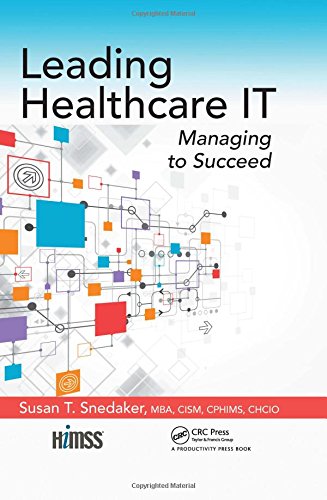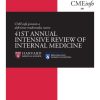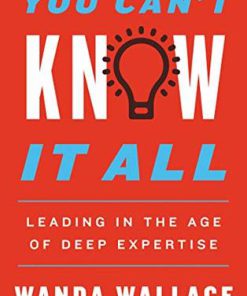Leading healthcare IT managing to succeed 1st Edition by Susan Snedaker ISBN 1351722212 9781351722216
$50.00 Original price was: $50.00.$25.00Current price is: $25.00.
Leading healthcare IT managing to succeed 1st Edition by Susan T. Snedaker – Ebook PDF Instant Download/Delivery: 1351722212, 978-1351722216
Full download Leading healthcare IT managing to succeed 1st Edition after payment

Product details:
ISBN 10: 1351722212
ISBN 13: 978-1351722216
Author: Susan T. Snedaker
Leading healthcare IT managing to succeed 1st Table of contents:
Chapter 1: Healthcare Information Technology Overview
Overview
- Background of Healthcare IT (HIT) development and importance.
- Current state of U.S. healthcare system and its need for innovation through HIT.
- Changing dynamics in healthcare delivery models.
- Expanding role of HIT in healthcare management and patient care.
- The increasing demand for new skills in HIT leadership.
Strategy
- How to deploy HIT strategies.
- Aligning IT with healthcare goals.
- IT governance and value generation in healthcare.
- Marketing HIT to stakeholders.
- Risk management in HIT, involving management, direction, and leadership practices.
- Importance of Lean practices in HIT.
Summary
- Overview and insights into HIT’s role in modern healthcare.
References
Chapter 2: Strategy, Vision, and Alignment
Overview
- Developing a clear IT vision aligned with the organizational strategy.
- The impact of defining IT vision with or without organizational direction.
Strategy Deployment
- Steps to implement IT strategies.
- Assessing internal capabilities and conducting SWOT analysis.
- Roadmaps to connect strategies with tangible results.
Summary
- Strategy development and alignment to drive HIT success.
References
Chapter 3: IT Governance
Overview
- What is IT governance and its relevance in healthcare settings?
- Key governance elements such as IT alignment, risk management, value delivery, and resource management.
IT Governance Framework
- Different councils and leadership bodies within healthcare IT governance.
- How to manage decisions and prioritize IT projects.
Success Factors
- Defining roles, responsibilities, and outcomes.
- Building continuous education and an expedited process for smaller IT requests.
Summary
- The importance of governance for HIT leadership.
References
Chapter 4: Defining and Delivering IT Value
Overview
- Defining the concept of IT value in healthcare.
Value Creation
- How standardization and best practices can create IT value.
- Encouraging innovation while maintaining operational standards.
Summary
- Framework for delivering and assessing IT value in healthcare.
References
Chapter 5: Marketing Healthcare Information Technology
Overview
- Identifying key customer segments in healthcare IT.
- Brand development for healthcare services, projects, and communications.
Relationship Building
- Marketing strategies for internal and external stakeholders.
- Building relationships within and outside the organization.
Summary
- Effective strategies for marketing HIT services.
References
Chapter 6: Inform, Involve, and Influence
Overview
- The importance of honesty, trustworthiness, and emotional intelligence in leadership.
Relationship Building
- Ways to inform, involve, and influence healthcare professionals to support HIT goals.
- Role of emotional intelligence in managing relationships and communication.
Summary
- Communication and relationship-building for HIT success.
References
Chapter 7: IT Risk Management
Overview
- Understanding risks and developing mitigation strategies in HIT.
Risk Assessment
- Different types of risks: strategic, operational, technological, and human.
- Key areas: service portfolio changes, technology assessment, end-user engagement, etc.
Summary
- IT risk management approaches in healthcare.
References
Chapter 8: Managing, Directing, and Leading
Overview
- Transitioning from technical expertise to effective management.
Managing
- Setting clear expectations, handling performance, and managing staff effectively.
Directing
- Leading managers and frontline staff, including dealing with multiple perspectives.
Leading
- Traits of a strong leader: vision setting, motivating others, adaptability, results orientation, and innovation.
Summary
- Essential skills for managing, directing, and leading HIT initiatives.
References
Chapter 9: Lean in Healthcare IT
Overview
- Basics of Lean management and its relevance to healthcare IT.
Lean Tools and ITIL
- How Lean intersects with ITIL and ITSM.
- Tools like Value Stream Mapping and Standard Work for continuous improvement.
Next Steps
- Starting small, experimenting frequently, and aligning initiatives with organizational goals.
Summary
- Lean methodology for optimizing HIT processes.
References
Chapter 10: Fast Forward
Overview
- The importance of operational optimization in healthcare IT.
Optimize
- Consolidating and standardizing technology and improving security strategies.
Engage
- Enhancing patient engagement through unified portals, secure messaging, and wearables.
Analyze
- Utilizing big data and analytics for population health management.
Innovate
- Fostering innovation through healthcare-business partnerships and internal initiatives.
Summary
- Strategic approach to future-proofing HIT.
References
People also search for Leading healthcare IT managing to succeed 1st:
leading healthcare providers
best healthcare administration programs
top healthcare architecture firms
top healthcare bpo companies in philippines
best healthcare it companies to work for
Tags:
Susan Snedaker,Leading,healthcare IT,managing,succeed 1st
You may also like…
Business & Economics - Management & Leadership
Business & Economics - Project Management
Leading and Managing Innovation 2nd Edition by Russell D Archibald ISBN 978-1138440265
Education Studies & Teaching
Business & Economics - Management & Leadership
Leadership without Ego: How to stop managing and start leading Bob Davids
Politics & Philosophy - Social Sciences
Managing Academic Libraries Principles and Practice 1st Edition Susan Higgins
Business & Economics - Management & Leadership
CHANGE RX FOR HEALTHCARE your prescription for leading change 1st Edition Killpack
Business & Economics - Management & Leadership
You Can’t Know It All: Leading in the Age of Deep Expertise Wanda T. Wallace












